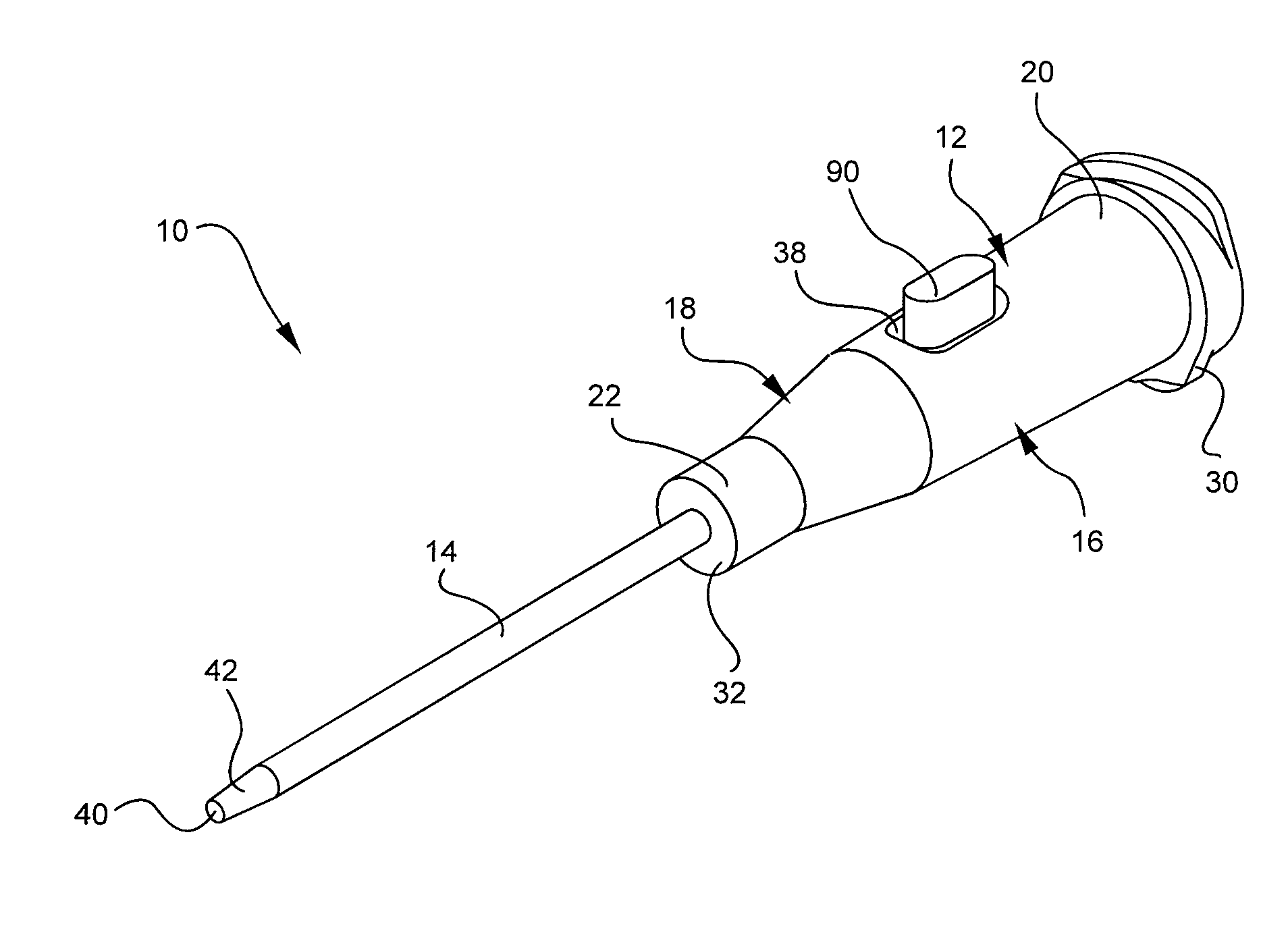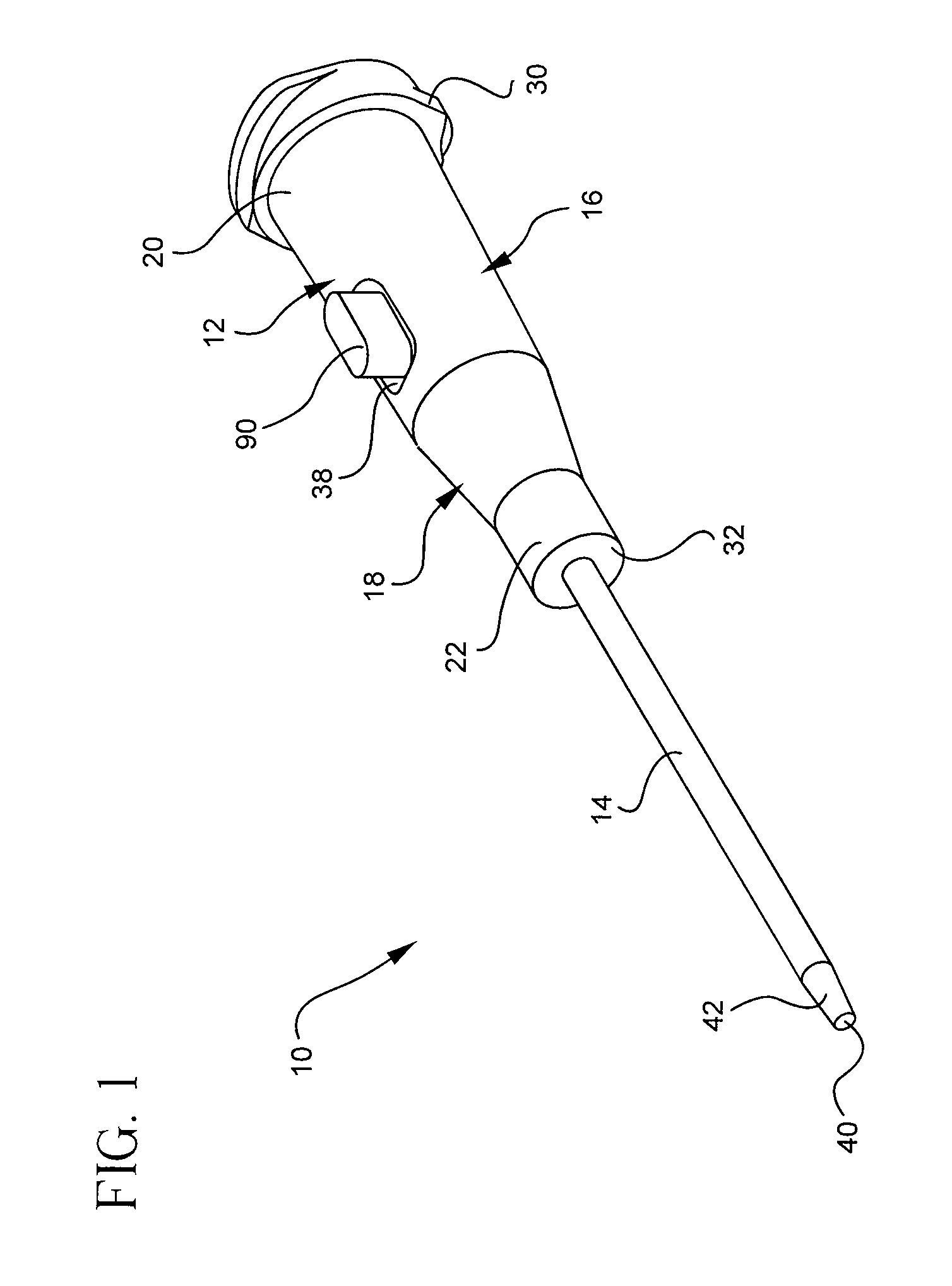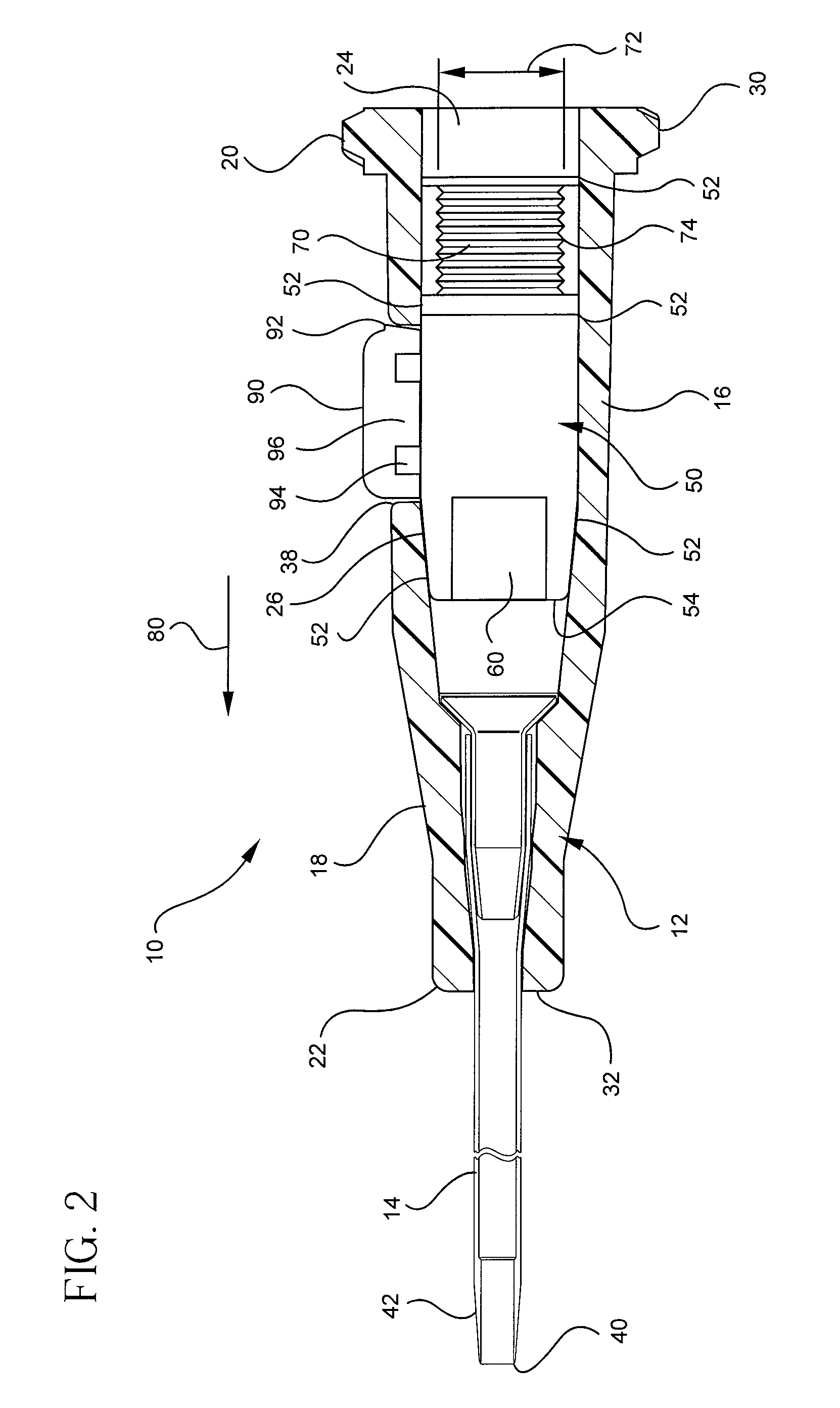Push-button blood control
a push-button and blood control technology, applied in the direction of haemostasis valves, valves, other medical devices, etc., can solve the problems of time-consuming and inefficient catheterization occluding the patient's vein with the clinician's finger or fingers, and inefficient use of constricting bands or pressure cuffs
- Summary
- Abstract
- Description
- Claims
- Application Information
AI Technical Summary
Benefits of technology
Problems solved by technology
Method used
Image
Examples
second embodiment
[0067]Referring now to FIG. 10, a cross-sectional side view of a catheter assembly 200 is show. In this embodiment, the catheter assembly is modified to include an actuator 210. The actuator 210 is generally tubular with an outer diameter 212 selected to slidably nest within the docking portion 70 of the septum 50. The actuator 210 further includes a flange 214 comprising the proximal end of the actuator 210. The flange 214 comprises an outer diameter that is greater than the inner diameter 72 of the docking portion 70 of the septum 50. As such, the flange 214 is prevented from moving beyond the proximal end 76 of the docking portion 70 of the septum 50. The actuator 210 may be further retained within the catheter adapter body 16 by modifying the catheter adapter body 16 to include an inner compartment 18. The inner compartment 18 comprises actuator stop 218 to prevent the actuator 210 from exiting the catheter adapter 12 through the proximal end 20 opening. The actuator stop 218 co...
third embodiment
[0072]Referring now to FIG. 13, a catheter assembly 300 is shown. The present embodiment comprises a catheter adapter body 312 and a catheter 14. The catheter 14 is comparable to the catheter 14 of the previous embodiment as described in connection with the previous figures. The catheter adapter body 312 comprises a rigid or semi-rigid material for encasing a flexible or semi-flexible septum 350. The catheter adapter body 312 generally comprises an outer shell or exoskeleton-like covering for the septum 350. The material of the catheter adapter body 312 is generally selected such that a set of threads 330 may be provided at the proximal end 320 of the catheter assembly 300. The material of the threads 330 must be sufficiently rigid such that a complementary set of threads may be coupled thereto. For example, a complementary set of threads may be incorporated into a component of an infusion system. As such, the component may be coupled to the catheter assembly 300 by engaging the thr...
PUM
 Login to View More
Login to View More Abstract
Description
Claims
Application Information
 Login to View More
Login to View More - R&D
- Intellectual Property
- Life Sciences
- Materials
- Tech Scout
- Unparalleled Data Quality
- Higher Quality Content
- 60% Fewer Hallucinations
Browse by: Latest US Patents, China's latest patents, Technical Efficacy Thesaurus, Application Domain, Technology Topic, Popular Technical Reports.
© 2025 PatSnap. All rights reserved.Legal|Privacy policy|Modern Slavery Act Transparency Statement|Sitemap|About US| Contact US: help@patsnap.com



